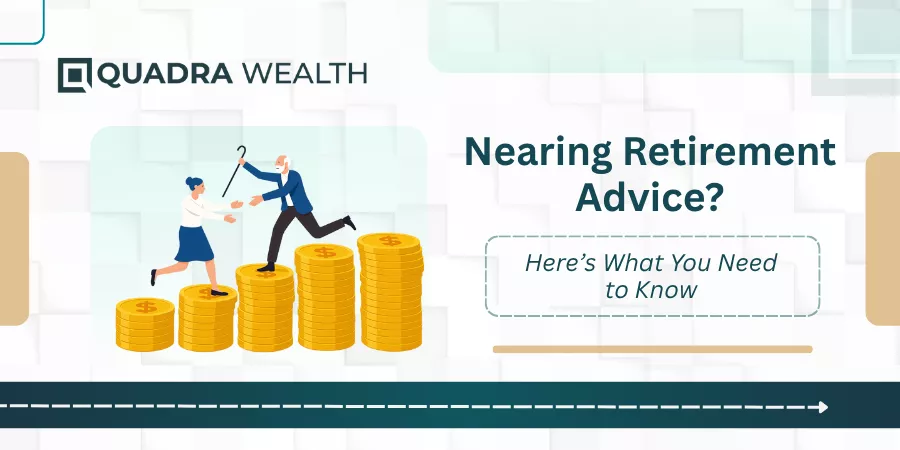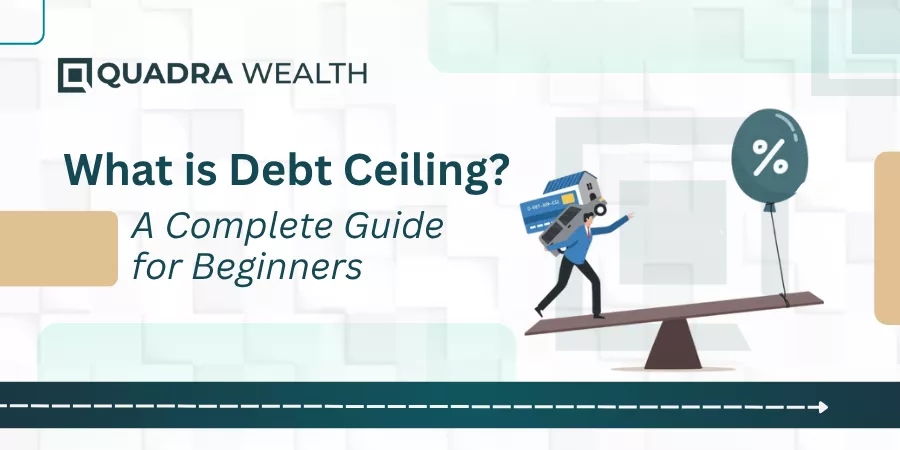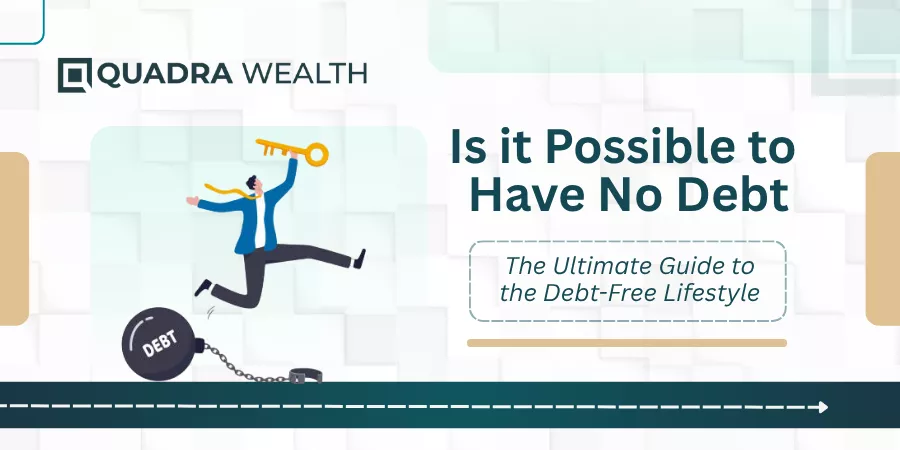Car insurance provides financial protection to individuals and their vehicles. However, there are fair chances that you no longer need coverage and you might need to cancel your car insurance at some point in time. That might lead you to ask yourself – how to cancel insurance renewal? The major reasons could be either switching to a new policy insurer or selling your old or new car.
Before you cancel your insurance that is to be renewed it is important to understand the process to avoid penalties or lapses in coverage. In this article, you will learn about the ins and outs of car insurance renewal cancellation. Read on to learn about the easy steps to follow and major points to consider during the process.

What Happens When You Cancel Your Policy for Car Insurance?
Car insurance cancellation may seem easy but you must consider a few consequences before initiating the process. The major ones are listed below –
1. Loss of Coverage
It is the most immediate effect that you will face on insurance cancellation. You won’t have any protection cover for your vehicle for damage, personal injury, or third-party liability after your car insurance is canceled. Also, note that in many jurisdictions it is illegal to drive without insurance. And you could end up with significant fines or legal consequences if you are caught as a result.
2. Potential Refund
You could be eligible for a refund of the unused premium if you have prepaid for your policy. Most insurers offer prorated refunds, meaning you’ll receive back the portion of the premium that covers the remaining days of the policy. However, keep in mind that some policies may include a cancellation fee or administrative charges that could reduce the amount of your refund. So make sure to read the policy terms and conditions properly before signing any document.
3. Impact on Your Driving Record
While canceling insurance doesn’t directly impact your driving record you must avoid a lapse in coverage as it can raise red flags when you apply for future policies. Insurance companies view drivers who have had gaps in coverage as higher risks, which can lead to increased premiums when you seek new insurance.
4. Notification to Authorities
In many countries and states, insurance companies are required to notify the Department of Motor Vehicles (DMV) or other relevant authorities when a policy is canceled. If your vehicle remains uninsured, this can lead to fines, penalties, or the suspension of your registration or driver’s license.
5. Loss of Loyalty Discounts
Like in the case of life insurance, if you have been with your insurer for a long time, you might have accumulated loyalty discounts. Canceling your policy will result in the loss of these discounts, which could be a factor if you plan to return to the same insurer in the future.
Also Read – Explore 7 Enticing Insurance Policies for Above 65 Years
Steps for Cancelling Renewal of Car Insurance
Car insurance cancellation can be a challenging process. If you want to cancel the policy follow these steps for a hassle-free experience –
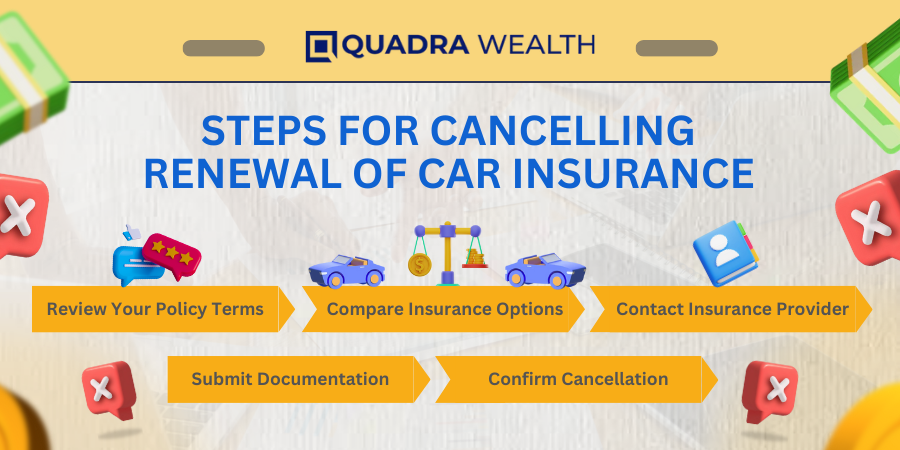
1. Review Your Policy Terms
Before you proceed with the cancellation, thoroughly review the terms and conditions of your car insurance. Some policies may require a certain notice period before cancellation, while others may charge an early cancellation fee. Make sure you’re aware of these details to avoid any unexpected costs.
2. Compare New Insurance Options
If you’re canceling because you have found a better deal elsewhere, it’s crucial to ensure that there is no gap between the cancellation of your current policy and the start of your new one. A coverage gap could not only leave you uninsured but also increase your future policy value, as insurance companies may view you as a higher risk.
3. Contact Your Insurance Provider
The most straightforward way to cancel your car insurance policy is by contacting your insurance company directly. Many companies offer multiple methods to cancel, such as via phone, email, or online through their customer portal. When you contact them, be clear about your intent to cancel and the date you’d like the cancellation to take effect.
Example: Some insurers require a 30-day notice before cancellation, while others allow immediate termination.
4. Submit Any Required Documentation
In some cases, the insurer may request additional documentation to process the cancellation, such as proof of sale for the vehicle, proof of new insurance, or written confirmation that you no longer need coverage. Make sure to contact your insurer regarding this and submit these documents promptly to avoid any delays.
5. Request a Refund
If you have paid your premium upfront, don’t forget to ask for a prorated refund for the unused portion of your policy in place. Most companies may decide to refund the amount of the policy in effect, though some may subtract any cancellation or administrative fees from the total.
6. Confirm Cancellation
Once your cancellation is processed, ask for written confirmation from the insurer. This should detail the cancellation date, any refunds owed, and any fees that were deducted. Having this confirmation ensures that you no longer have any liability. It also serves as proof in case there is a dispute.
7. Notify the DMV (if required)
In some regions, you may be legally required to notify your local motor vehicle department of the insurance cancellation. Failing to do so could result in penalties, fines, or a suspended registration.
Can You Cancel the Policy for Car Insurance at Any Time?
Yes, in most cases, you can cancel a policy with the car insurance company via email at any time. However, the timing of your cancellation can have implications:
1. Mid-term Cancellation
You are free to cancel your car insurance mid-term, though some insurers may charge a penalty for doing so. This fee is typically a flat fee or a small percentage of the remaining amount of the policy. Make sure to check your policy’s terms and conditions to see if any fees apply.
2. Cancellation at Renewal
Cancelling at the time of motor insurance policy renewal is often the easiest and most cost-effective way to switch providers. By canceling at the end of your current term, you avoid paying any penalties, and you are free to shop around for better deals without the hassle of mid-term adjustments.
3. Cancellation After Filing a Claim
If you’ve recently filed a claim, canceling your policy might affect the settlement process. Be sure to clarify with your insurer how a recent or pending claim will be handled upon cancellation. In some cases, you may need to wait until the claim is fully processed before canceling.
Cancelling During the Cooling-Off Period
Most car insurance policies come with a cooling-off period – a set number of days (usually 14 days) during which you can cancel the policy without penalty. This period is designed to give you time to reconsider your purchase.
1. How It Works
During the cooling-off time period, you are entitled to cancel your policy for any reason, and you’ll usually receive a full refund, minus any fees for the days you were covered. The money-back process is straightforward if no claims have been made.
2. Why Cancel During the Cooling-Off Period?
The cooling-off period is the best time to cancel if you have found a better deal, changed your mind, or no longer need coverage for your vehicle. Cancelling during this window ensures minimal fees and a hassle-free process.
Example: You purchase insurance and then find a much cheaper policy within a week. During the cooling-off period, you can cancel the more expensive policy without any major financial penalties.
How to Cancel Car Insurance When You Are Covered Under Someone Else’s Policy
If you are not the primary policyholder and are covered under someone else’s insurance (for example, as an additional driver on a family member’s policy), the process for cancellation is a bit different. To cancel your insurance policy you need to follow the below procedure –
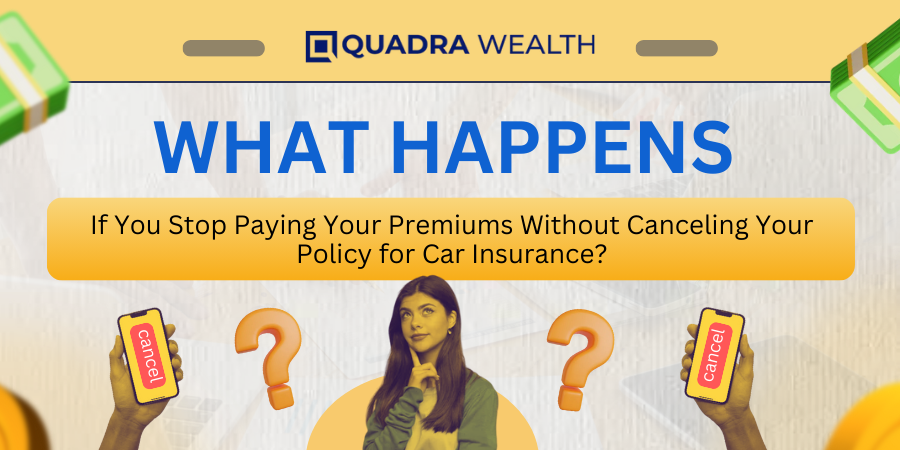
1. Talk to the Primary Policy-holder
Since you are not the owner of the policy, the primary holder of the policy will need to initiate the cancellation process or remove you from the policy. They can do this by contacting the auto policy insurer and requesting a change.
2. Obtain Written Confirmation
Once you have been removed from the policy, ensure that the primary holder for the policy or the insurer sends you written confirmation of the cancellation. This ensures that you are no longer listed as an insured driver and that you are not liable for any future claims or payments.
3. Consider New Coverage
If you still need to drive, you need to take your car insurance coverage separately after being removed from the other policy. Failing to arrange the required policy documents can result in legal issues if you drive without coverage.
Must Read – What Happens To Your Retirement Money When You Die?
What Happens If You Stop Paying Your Premiums Without Cancelling Your Policy for Car Insurance?
Simply stopping payment without formally canceling your policy can lead to several negative consequences:
1. Policy Lapse
If you stop paying your premiums, the insurance company may eventually lapse your policy after a grace period, which can vary from a few days to several weeks. During this period, your insurer will attempt to contact you to resume payments. Once the grace period ends, the policy will be terminated.
2. Debt Collection
In some cases, insurers may send your unpaid premiums to a debt collection agency. This can harm your credit score and result in additional fees and legal costs.
3. Driving Without Insurance
A lapsed policy means you’re no longer insured, and if you continue to drive without coverage, you’re subject to fines, legal action, or even the suspension of your driver’s license, depending on local laws.
4. Higher Future Premiums
Letting your policy lapse can make it more difficult to obtain affordable insurance in the future. Insurers may charge higher premiums or refuse to insure you if they see a history of missed payments or gaps in coverage.

Conclusion
Cancelling your car insurance policy is not as complicated as it may seem. By following these steps, you can smoothly cancel your policy, avoid penalties, and potentially get a refund. Whether you’re switching insurers, selling your car, or no longer need coverage, always ensure that you have a plan in place to avoid any coverage gaps. A little preparation can save you from legal issues and financial burdens in the future.



